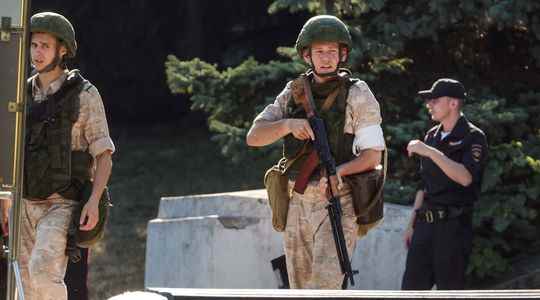The Russian offensive is “weakening” and showing “signs of failure” in its attempt to fully occupy Ukraine. This is what Ben Wallace, British Defense Minister, said during a trip to Copenhagen on Thursday 11 August. Since the start of the offensive last February, 80,000 Russian soldiers have been killed in action, according to Colin Kahl, a senior Pentagon official. A colossal number: compared to the number of Russian soldiers, this would correspond to almost 10% of the country’s active forces before the start of the conflict (about 850,000 non-conscription soldiers in 2021, according to American intelligence). 170 days after the start of the war, replacing these soldiers has become a crucial issue in order to continue the fight.
Moscow then opted for radical solutions. The Insideran independent Russian newspaper, recently published in partnership with Bellingcat, dozens of emails addressed to the Russian military prosecutor’s office and coming from the families of mobilized soldiers. Conscripts sent to Ukraine against their will, sometimes without a contract, soldiers forced to sign reports, concealment of the fate of soldiers killed or taken prisoner, refusal to distribute food or demobilize some wounded… The investigation reveals many many deviations from the Russian army.
Anna Colin Lebedev, lecturer at Paris-Nanterre University and specialist in post-Soviet societies, remarked on Twitter that “this bundle of clues clearly shows that the Russian army has a recruiting problem and that it is trying by all means to avoid declaring a mobilization.” Sometimes leaves to deprofessionalize his army.
A composite army
The Russian army has many faces. To the active soldiers mentioned above, we must add the conscripts, drawn at random from among young men aged 18 to 27 and who represent approximately 30% of the total armed forces. “These are generally young people from disadvantaged backgrounds, from ‘non-Russian’ ethnic groups and living in the peripheral territories of the country”, explains to L’Express Sergei Fediunin, doctor of political science at Inalco. At the end of their service, these young men often engage in the active army, but before that, they are not supposed to be deployed in the field. The Insider reveals the opposite. Worse, some of the complaints evoke young people “sent to fight by force under the threat of imprisonment” and contracts signed “voluntarily-compulsorily”. “Technically, we don’t know how many of these conscripts were sent to Ukraine, according to Sergei Fediunin, Moscow is afraid of a social reaction. But we know that they exist…”
For the moment, the Moscow regime still claims not to send its conscripts to fight in its “special operation” in Ukraine and refuses to decree general mobilization. On the other hand, he has raised battalions of volunteers, some of whom have already joined Russia’s “special operation”. “This makes it possible to trivialize the war, underlines Sergei Fediunin, the local governors do not have enough reservists. Other solutions must be found to avoid a general mobilization which would be an admission of war on the part of Moscow.”
Problem: these volunteers are not trained in the codes of war. Those who join do so for financial reasons, sometimes under strong social pressure or to escape personal debt. In exchange for their commitment, they receive compensation of 200 to 300,000 rubles (between 3,200 and 4,800 euros), between 5 and 7.5 times the average salary. With these “volunteers”, the profile of Russian soldiers is diversifying and the share of professional soldiers is reduced while the number of soldiers killed and wounded increases. On Twitter, Anna Colin Lebedev is considering a possible “partial mobilization” to come.
